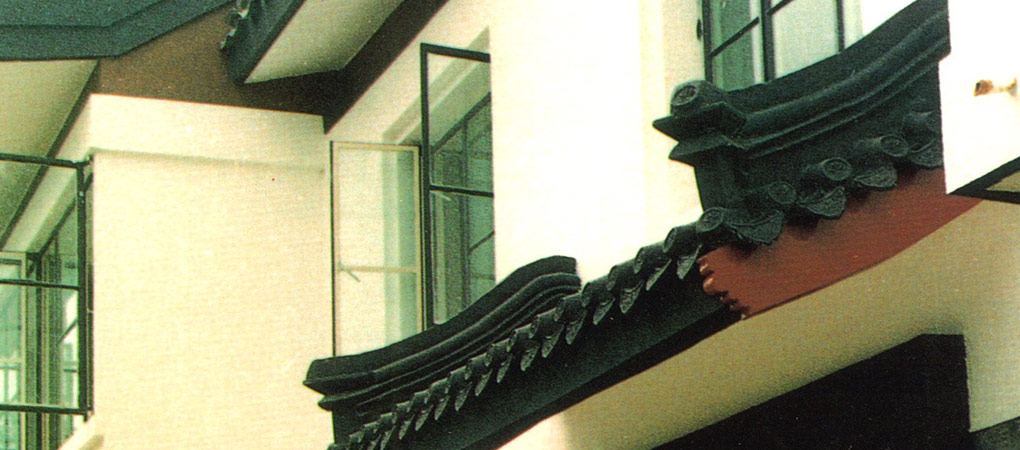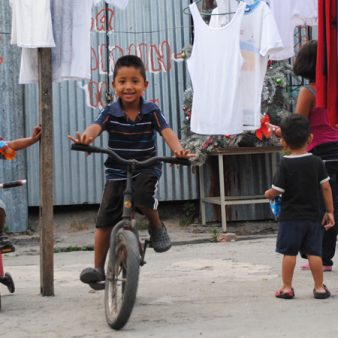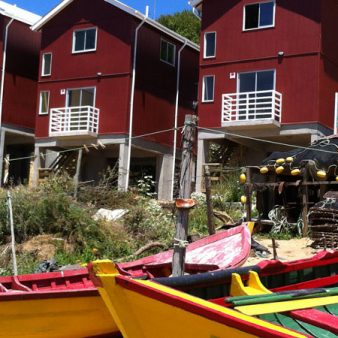The Ju’er Hutong Courtyard Housing Project is pioneering a new approach to urban renewal in the heart of Beijing. Traditional courtyard housing is being restored and improved, avoiding the need for wholesale demolition of historic but dilapidated inner-city housing. Equally importantly the project seeks to bring about a new approach to the funding and planning of housing provision within historic cities.
Traditionally, Beijing was laid out in a rigid grid pattern with main streets dividing the city into many urban quarters which were supported by a multitude of narrow lanes. Between these lanes small blocks of high-density courtyard housing developed. Hutong is the northern Chinese term for these traditional urban neighbourhoods. Over the years the courtyards of these old brick and timber dwellings had gradually become infilled with temporary dwellings as pressure on land increased. Lack of sunshine and ventilation, drainage and basic sanitation meant that they had become increasingly unwholesome places to live. Pressures for development were threatening to destroy this 700 year old urban structure, but the pioneering work of Professor Wu Laingyong of the renowned Tsinghua University has brought about a reconsideration of previous planning policies and the restoration and improvement of these historic areas of the city of Beijing.
The project started in 1987 and is continuing to expand throughout Beijing and other Chinese cities. To date, 46 dwellings have been completed with a further 80 dwellings in progress. Plans for a further 80 dwellings are prepared and a considerable area of historic Beijing is currently under planning and design, based on the success of the Ju’er Hutong experiment. It is estimated that there are 10 million such traditional low-rise houses throughout China.
The experiment in the Ju’er Hutong neighbourhood has shown that, given the fixed two and three storey height limit the new courtyard housing can achieve the same density as high rise housing. It brings at the same time many other benefits, including a green, quiet environment in the heart of the city and retains a socially cohesive community life in the area. Compared to high rise construction, the construction process is simple and affordable and the dwellings have lower maintenance costs. The process of renewal is an organic process whereby better quality dwellings are retained and restored and the worst are replaced with new dwellings, sympathetic in design and layout to the local area. This is not a blanket restoration process, but rather, a process of appropriate renewal and replacement of the fabric supporting a living, vibrant neighbourhood.
The scheme attempts to achieve a balance between privacy and community life. Each family is provided with their own private outdoor space, such as small yards or terraces on the upper floors. These spaces are larger than those typically provided by the balconies on the new tower blocks being built around the city. Sophisticated design techniques are used to avoid the problem of being overlooked. Facilities are much improved within the dwellings with the provision of basic amenities – previously the nearest toilet had been 100 m away.
The project however is not simply one of physical restoration, it also seeks to establish new approaches to the funding of housing provision in China as well as developing successful collaboration between local government, residents and academics in the provision of new and improved housing and living conditions in some of the poorest areas of Chinese cities.
The project seeks to bring about radical change to the traditional state housing allocation system, under which everyone expects the state to provide them with free housing. Meeting such expectations has proved financially impossible. Under the Ju’er Hutong experiment however the cost of rehabilitation is shared between the local government, the residents and the work units where the residents work. Existing residents are entitled to a discounted price to encourage them to stay in the project. Those who do not wish to stay are provided with good quality alternative accommodation. Any flats remaining after the needs of existing residents have been met are sold at the full market price, thereby recouping the costs incurred and generating a surplus to enable further work to be carried out.
A further innovative aspect of the project is the degree of cooperation and collaboration that has been fostered and encouraged in the process of neighbourhood renewal. Planning and design has been carried out in close cooperation with all those involved and project implementation has been facilitated by a close relationship between the residents, architect/planners and the local government. A housing cooperative has been formally established and is supported by the residents. The Ju’er Hutong experiment is now regarded as a model for future development by the Beijing city government, providing as it does an effective approach in both design and policy implementation for historic areas of the city.
Partnership
Academic/research, local government, local community



